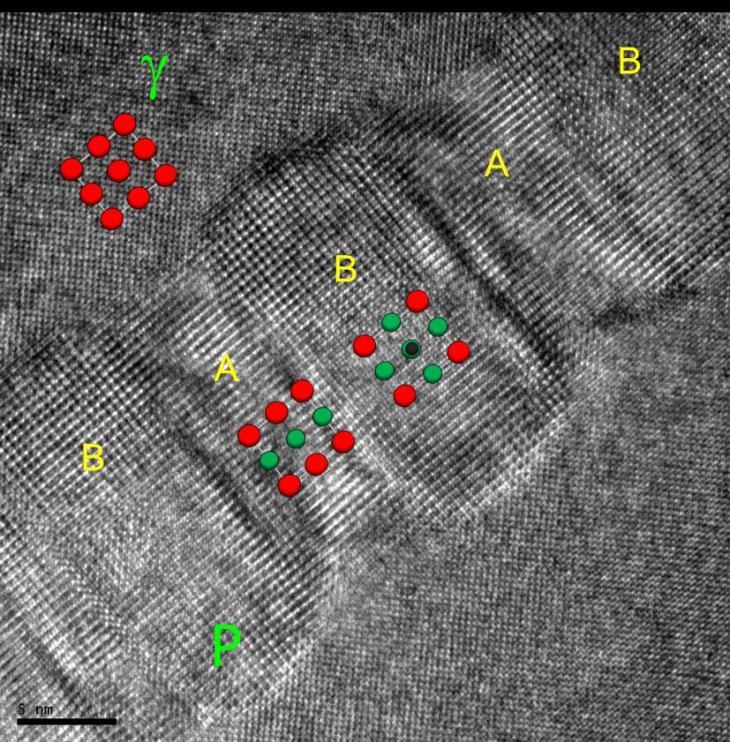Watching Atoms Dance: 2015 IAM Nano Conference in Hamburg
Approximately 120 scientists from all over the world convened at the IAM Nano Conference from July 8th-10th in Hamburg. The meeting of experts in the field of electron microscopy was organised by material scientists at the Helmholtz-Zentrum Geesthacht (HZG).

Blocks of carbon atoms (B) embedded in a titanium-aluminium alloy; the atom arrangement in different areas is shown schematically. The titanium aluminium alloy's atom arrangement in the gaps (A) have adapted to the carbon-rich areas.
The electron microscope made its appearance in the scientific world in the middle of the last century. Enormous progress has been made particularly with what is known as the “transmission electron microscope” (TEM). These advances, amongst others, were introduced at the conference. The TEM is a special type of electron microscope used for passing electron beams through objects. The top international TEM researchers and users gathered to demonstrate that, through technological advances in this field, individual atoms can be observed today with the help of TEM.
Prof. Florian Pyczak, conference organiser and department director at the HZG’s Division of Materials Physics, explains: “The newly developed TEM correctors, which work like eyeglasses for the device, have now resulted in exciting advances and discoveries. At the conference, for example, we saw how individual atoms can be observed alternating back and forth between one excited state to the next. It’s like watching atoms dance.”
Florian Pyczak’s department operates the TEM at the HZG and utilises the instrument to study samples of custom-made high performance materials developed at the centre. These materials include titanium and aluminium alloys that contain a portion of carbon. With the assistance of HZG's in-house TEM, important images are now available to the scientists that characterise their new materials and provide, for example, information on how atoms are arranged. Florian Pyczak adds, “We don't know yet which carbon atom arrangement is most suitable. By using the TEM images, we can better identify these arrangements, and then we can improve how we later reproduce the state.”

The Participants of the conference in Hamburg.
Photo: HZG/ Heidrun Hillen
Preparing the sample is a very involved process. An essential requirement for the TEM sample is that the area under examination must only measure about ten to one hundred nanometres thick. One hundred nanometres means that the sample thickness measures only about one thousand atom layers. A nanometre in comparison to a metre is like the diameter of a hazelnut compared to the diameter of the Earth.
The TEM limit of resolution is 0.05 nanometres. This limit cannot be physically expanded further. What challenges will the TEM developers face next? “Today we can view single atoms; now it's about improving the contrast. This would mean we could get a clearer picture of the atoms and we could precisely differentiate between particular types of atoms,” says Florian Pyczak.
Contact

Department Metal Physics
Phone: +49 (0) 4152 87-2545
E-mail contactMax-Planck-Str. 1
21502 Geesthacht

Max-Planck-Str. 1
21502 Geesthacht
